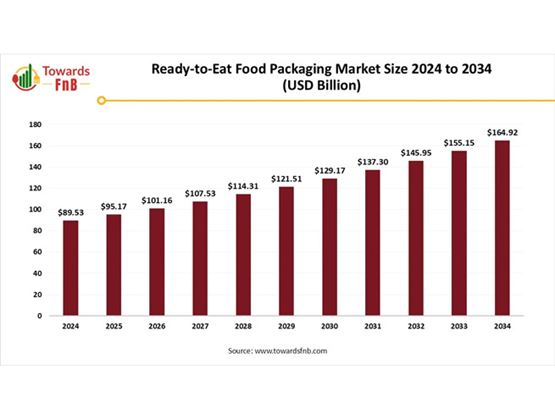
Global market for food packaging
Ready-to-eat food packaging: analysis by segment
The analysis by segment highlights the dynamics specific to each category:
- By region: North America currently dominates the market, driven by strong consumption of processed products, while Asia-Pacific is expected to see the strongest growth in the coming years thanks to rapid urbanisation and changing consumption patterns.
- By material: plastics remain dominant due to their flexibility and cost, but paper and cardboard are expected to see significant growth, driven by demand for more sustainable solutions.
- By type of packaging: rigid formats currently dominate, but flexible packaging (bags, films) is expected to grow rapidly due to its lightness and practicality, according to Towards FnB.
- By product type: boxes and cartons still hold the top spot, but films and bags are gaining ground, responding to demand for compact and easily transportable packaging.
- By application: ready meals lead the way, while snacks and confectionery are gaining ground, boosted by the rise in on-the-go consumption.
Packaging: when AI changes the game
Segment analysis highlights clear trends: depending on the region, materials or type of packaging, the market is moving towards greater practicality and sustainability. But beyond these structural dynamics, another transformation is taking place: the introduction of artificial intelligence (AI) is profoundly changing the sector. In factories, computer vision systems inspect packaging lines in real time to identify defects, leaks or contamination, thereby enhancing food safety. AI is also influencing the choice of materials: machine learning models compare performance, costs and environmental impact to optimise solutions. In addition, predictive analytics makes it possible to adjust production to demand, anticipate breakdowns through predictive maintenance and reduce waste. The topic of AI and its impact on the packaging industry will be at the heart of the conferences at the next edition of ALLFORPACK EMBALLAGE PARIS, from 24 to 26 November 2026 at Paris Nord Villepinte.
For more news, visit here.

